6 of the Best Saturation Plugins on the Market
Over the years, I’ve come into the possession of countless plugins. Some have been great investments, while others have made their way to the bottom of my production toolkit, never to be seen again. In particular, I’ve found that saturation plugins can be extremely hit or miss.
There’s no such thing as the “best” saturator, but there are saturators that rise above the rest when challenged with certain tasks. Perhaps you’re looking for a saturator that’s going to thicken up your drums, or maybe you’re looking for a saturator specifically for mastering.
With that in mind, rather than try to create a comprehensive list of all the saturators out there, I’ve broken this list down by application, and picked my top, tried-and-true favorite for each category. Read on below for my top picks, along with the sources I’ve found them to be best suited for.
Best for Vocal Saturation: SDRR by Klanghelm ($27)
Klanhelm’s inexpensive SDRR plugin works phenomenally well on vocals. If you’re looking for some subtle saturation that’s going to add that extra little bit of missing warmth and really sweeten up your vocals, the SDRR is what you’re looking for. A huge step up from most stock saturators, the SDRR has quickly become one of my go-to saturators.
SDRR has 4 distinct modes: “Tube” emulates analog tube saturation; “Digi” emulates modern, digital saturation; “Fuzz” emulates distortion caused by germanium fuzz stomp boxes; and “Desk” Emulates the sound of analog mixing consoles.
Each of these modes react dynamically to the input signal, so you’ll achieve varying results depending on how hard you drive the input gain.
I’ve found that when applying the SDRR to vocals, Desk mode seems to get me the results I want the quickest. This mode allows you to manipulate how the saturator shapes transients, as well as allowing you to apply compression and giving you access to some unique low shelf and high shelf knobs.
As far as value goes, the SDRR is going to give you some of the best bang for your buck out there. You’re basically getting 4 saturators for the price of one. If you want a taste of the SDRR’s sound, you can download the somewhat more limited IVGI saturator from Klanghelm for free. It’s a saturation plugin based off of the DESK mode available in SDRR.
Best for Drum Saturation: Reviver by DSP Fielding ($29)

“Reviver” maybe a sleeper of a plugin. But this cult favorite is inexpensive, simple-to-use, and makes for stunningly good saturation for drums.
Reviver is another super-affordable option and is also, hands down, my favorite saturation device for drums. By increasing the third-order harmonics slider, I’m able to get my kick and snare sitting together, sounding thick and fat.
I had used other saturation plugins for my drums, but nothing was quite getting me that “glued” sound that I was looking for. I primarily do engineering work for EDM artists and before Reviver, there was something missing on my drum bus.
In EDM tracks, the kick and snare are often the most prominent elements of the song. If they don’t feel right, it can really throw the listener off.
This saturator is super easy to use. There are 4 sliders: Input, output, second-order harmonics and third-order harmonics. Increasing second-order harmonics will provide you with a warm, full-bodied sound and increasing third-order harmonics will provide you with a punchy, fat sound.
Typically, I’ll put a glue compressor on my drum bus, with a moderate attack (around 30ms) and a long release (with the exact timing depending on the track) to get my drums living in the same space. After this, I hit my drum bus with Reviver, increasing the third-order harmonics, which really brings my drums together.
Best Tape Saturator: J37 by Waves ($69 on sale, $299 reg)
The most subtle saturator on this list is the J37, which is meant to model a high-quality analog tape machine.
The J37 won’t give you that super-distorted sound, but it will add warmth and body to whatever you apply it to. I’ve used the J37 on vocals, leads, basses, drums, busses and even while mastering.
The J37 was created solely to reproduce the sound of authentic analog tape saturation, and let me tell you, it does its job very well.
Outside of its primary function, the J37 has trouble competing with the other plugins on this list. This goes both ways though: I don’t think any of the other plugins on this list even come close to emulating tape saturation in the same way that the J37 does.
If you’re looking for the vintage sound of a tape machine, the J37 is for you. The great thing about this plugin is that you can demo it for free! Waves is good about discounting its plugins once they’ve been out for a while, and this one is currently massively reduced. Try it out for yourself to decide if $69 is worth adding a very effective one-trick pony to your arsenal.
Best for Bass Saturation: Decapitator by Soundtoys ($199)
Decapitator is my go-to saturator when I’m trying to get a bass to sound really dirty and give it some hard, raw flavor.
What I love about this saturator is that it doesn’t take long to find a great sound. By pushing the drive a little bit, and flipping through the analog saturation models, I’m able to quickly and easily get a sound that I like.
Decapitator is well known for it’s “punish” button, which adds extra input gain. Engaging this button will apply extreme distortion and saturation, allowing you to completely mangle the audio you’re working with. Decapitator also includes a tone, low cut, and high cut knob, further increasing its sound shaping options.
If Decapitator wasn’t a beast already, Soundtoys made the outstanding choice to include a mix knob. By manipulating the balance between the dry and wet signal, you’re essentially applying parallel saturation. I think that this feature really broadens the horizon in regards to how you can apply Decapitator to different sounds. I’ve found myself not only using it on basses, but in parallel on dirty synth leads as well.
All of Soundtoys’ plugins are analog modeled and have a truly unique sound. Soundtoys offers free demos of all their plugins, so you can try before you buy. Be careful though, once you hear them, you’re probably going to want all of them. Luckily, you can pick up their entire plugin bundle for $499. Soundtoys also offers an academic discount, so that’s worth taking advantage of it if you’re in school.
Best for Mastering Saturation: Black Box Analog Design HG-2 by Plugin Alliance ($249)
The “Black Box” is an emulation of its hardware namesake, and a god among mortals.
I use this one mainly for group processing and mastering purposes. The Black Box adds richness and punch to your busses, while also allowing you to increase perceived loudness. If I’m looking to squeeze a little bit of extra loudness and presence out of a track, the Black Box is what I reach for.
The signal flow of the Black Box is what provides it with its brilliant color. The dry signal runs through an input transformer, one of two parallel saturation tubes that you can choose from, and then in serial, it runs through a pentode, triode and finally an output transformer. Depending on your settings, you’re able to get really unique and varying sounds from the Black Box.
It rings in as the most expensive plugin on the list, so if budget is an issue, I might not recommend running out and buying it right away. For those of you with a refined taste for saturators, it will make a great addition to your toolkit.
Plugin Alliance tends to price their plugins toward the more expensive side, but there are ways to get their products far cheaper than advertised: The company puts a large number of their plugins on sale every month with discounts upwards of 50% off. You can also save up to 60% on top of that, depending on how many plugins you purchase at once. With the holiday sales coming up you can be sure that tons of their plugins will be going on sale, so the Black Box is certainly one worth keeping an eye on, even if it seems out of reach right now.
Best All-Around Saturator: Saturn by Fabfilter ($154)
Saturn is the most versatile saturator on the list. It can perform very subtle saturation, as well as extremely creative and destructive saturation.
If you could only own one saturation plugin, this is probably the one to get.
Saturn offers a ton of control in the way that it applies processing.
Its multi-band functionality allows you to create up to 6 saturation bands, each of which gives you access to its own dedicated feedback knob, drive knob, tone adjustment sliders and mix knob!
Just when you thought it couldn’t get any better, Saturn adds in a number of built-in modulation tools. These include an XY controller, LFO, envelope generator, envelope follower and MIDI source modulator. You can easily connect these modulation tools to different parameters within Saturn by dragging their target icons to the parameters of each band. The addition of a modulation section really allows you to infuse life into otherwise static sounds.
Fabfilter also offers all of its plugins as part of a bundle, for 50% off. If you’re a student, they’ll be able to offer you an even better deal.
Honorable Mentions
With so many saturators on the market, it would be difficult—and not all that useful—to try and name every single one, but a few other favorites that find their way into my regular rotation include the VintageWarmer2 by PSP, Supercharger GT by Native Instruments and Vintage Tape by Ozone.
Did we miss any of your favorites? With so many options (and tastes) out there how could we not?? Tell us about your own top picks in the comments below!
And, if you’re interested in beefing up your plugin library even more, check out my “Ultimate List of Plug-In Companies” on Black Ghost Audio for for my top recommendations.
Summing it Up
There you have it, my 6 favorite saturation plugins, along with the sources I believe they’re best suited for. Keep in mind that each of these plugins can be used for a wide variety of applications as well. For example, the SDRR sounds great on vocals, but you can also use it to saturate and thicken up your kicks to great effect.
The more options you have at your disposal, the easier it will be to achieve the sound you’re looking for. But at a certain point, you’re going to have to whittle down your choices to a handful of top “go-tos” if you want to get anything done in the studio, instead of spending your time tweaking all day long.
If you aren’t familiar with all of your saturation options yet, it’s wise to take the time to try and learn how to use a good number of them. The entries here are my top recommendations for the very best places to start. But ultimately, having one saturator that you know how to use really well is much more valuable than having 6 saturators that make you feel like you’re staring into the Matrix for the first time.
Charles Hoffman is a Mixing and Mastering Engineer at Black Ghost Audio. After graduating from the University of Manitoba with an English degree, Charles completed his education at Icon Collective in Los Angeles, CA.
For more great insights into both mixing and mastering, try our full-length courses with SonicScoop editor Justin Colletti, Mixing Breakthroughs and Mastering Demystified.
Please note: When you buy products through links on this page, we may earn an affiliate commission.







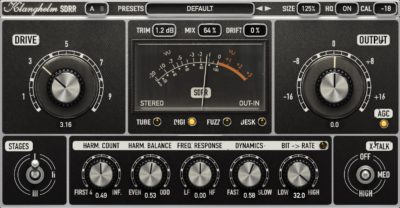
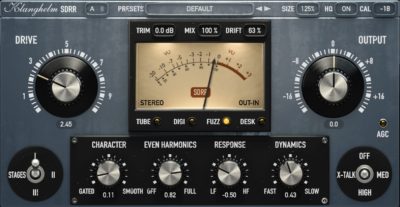
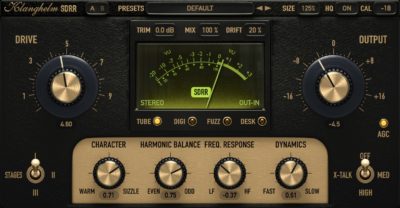
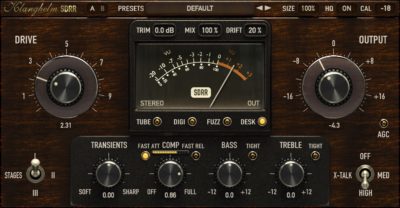
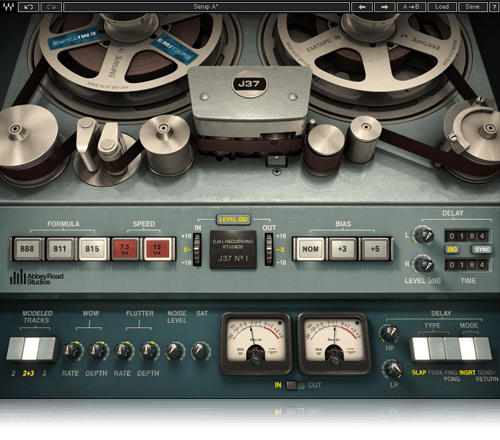
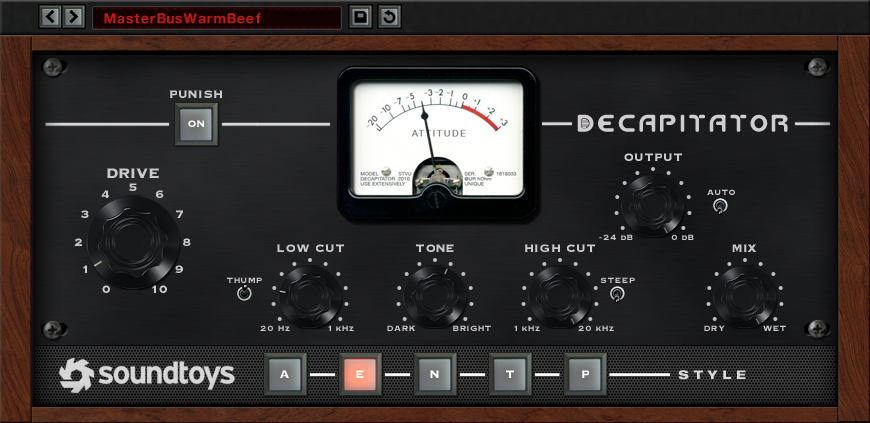
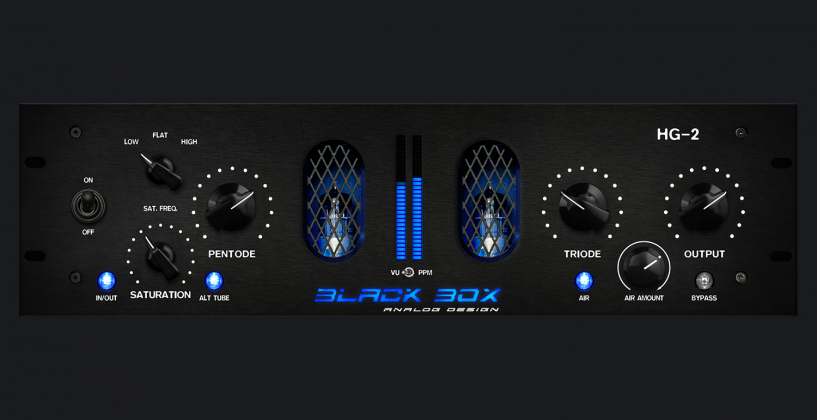

Robbie Phillips
November 16, 2017 at 5:16 pm (7 years ago)iZotope Trash 2!! My go-to saturation/distortion plugin.
Matthias Miller
November 16, 2017 at 6:04 pm (7 years ago)No love for Softube Saturator? Or Slate VTM? Shame….
GAS-Personified
November 16, 2017 at 7:30 pm (7 years ago)Any love for SPL Twintube? Nice mixture of saturation and presence/upper harmonics processing. You can push it pretty far without it sounding bad.
George Piazza
November 17, 2017 at 1:14 am (7 years ago)I second that! I use SPL Twintube on a lot of overly clean sources.
George Piazza
November 17, 2017 at 1:30 am (7 years ago)If you have a UAD card, the Thermionic Culture Vulture is really good if used moderately. I was using Soundtoys Decapacitator a lot, but when I A/B’s the Triode & Pentode styles against the Culture Vulture, I found the CV had a lot more expressiveness; it d much more evenly and analog-like to signal dynamic than the Decapacitator.
I’m surprised by the inclusion of the Waves J37 in the above list; I find that the Slate VTM is more ‘real’; and the UAD tapes, especially the ATR 102, are superior. Even the Waves Eddie Kramer Tape plugin sound better, IMO.
Also surprised by the inclusion of the NI Supercharger; Never liked the way it sounded. But to each their own. I mix more rock, pop & rap; not much EDM, so maybe there’s the difference.
The Vertigo VSM-3 is another really nice piece (available through plugin-alliance and UA), with a 2nd order and 3rd order section, parallel and serial options, mid & side choices for either or both, you do all kinds of fun things.
Used to love iZotope’s Trash, but the complexity is a bit much; ironically the 1st version was more usable, at least for guitar amp emulation.
I heard from some people that the Black Box sound a bit flat and lifeless; I’ll have to try it & see.
Surprised how the PSP Vintage Warmer has held up for so long.. I still use it on occasion, though not much in mastering anymore.
Jason C
November 17, 2017 at 8:59 pm (7 years ago)U-he Satin is the best tape imo
mdrmusic
November 19, 2017 at 6:23 am (7 years ago)Softube Tape is the nicest for me.
Michael Levine
November 20, 2017 at 11:35 pm (7 years ago)Slate’s new Virtual Tube Collection, VCC Console emulators, Virtual Buss Compressors and Virtual Tape Machine are all amazing at saturation, adding extra life and dynamics while gluing things together.
Robert
December 4, 2017 at 4:40 pm (7 years ago)Agree with all the above…Use Thermionic Culture Vulture all the time. Maserati VX1 also works great on vocals that need a bit of dirt (for me). Slate’s new Virtual Tube Collection should also be mentioned.